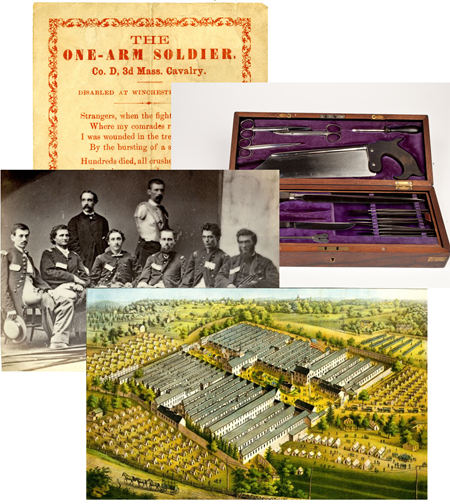Battle-scarred: Caring for the Sick and Wounded of the Civil War

Why, after 150 years, do we continue to find the American Civil War so compelling? Certainly the nature of the conflict and the appalling number of casualties--some 620,000 killed in action or dead of wounds or disease--have engrossed the attention of historians, researchers, and the public since the war itself. The war was also fought on home soil, with many battlefields near American cities and towns. Even more gripping, perhaps, is the array of documentation that survives from the war. Hundreds of books and memoirs of wartime experiences and military life have been published over the years, but there are also rich collections of official government and military records, personal letters and diaries, photographs, newspapers and periodicals, clothing, artifacts, relics, weapons and armaments, memorabilia, artwork, poetry, and music, documenting every conceivable aspect of the Civil War, from men and women, Union and Confederate, soldiers and civilians, that offer local and personal dimensions to an epic national political and military struggle.
Battle-scarred examines the Civil War from a particular perspective, drawing on the rich library and museum resources of the Countway's Center for the History of Medicine, to commemorate those who died in battle and also document the experiences of the wounded and the ill and the men and women who cared for them on the battlefield, in hospitals and prison camps, and on the home front.
Credits
Battle-scarred is an exhibit curated by Jack Eckert and Dominic Hall. The online exhibit was created by Simmons College intern Jennifer Hornsby in December 2012.
